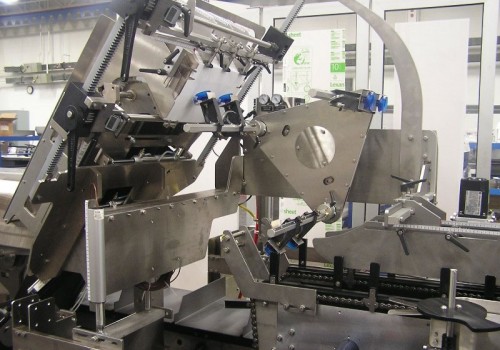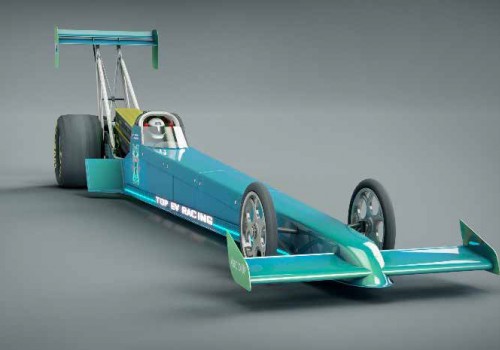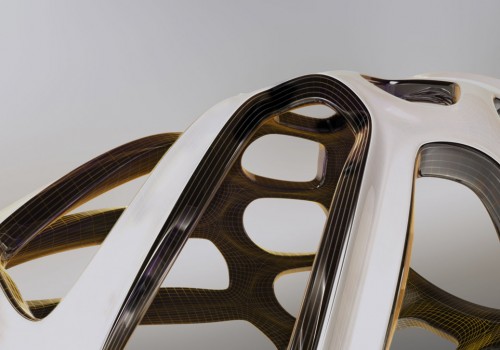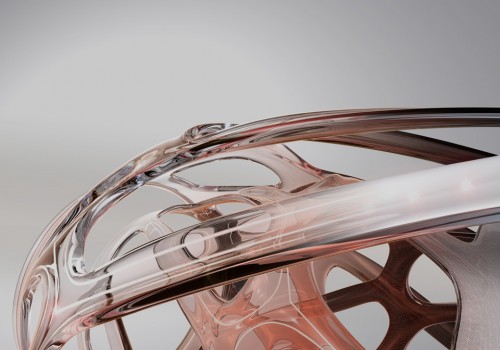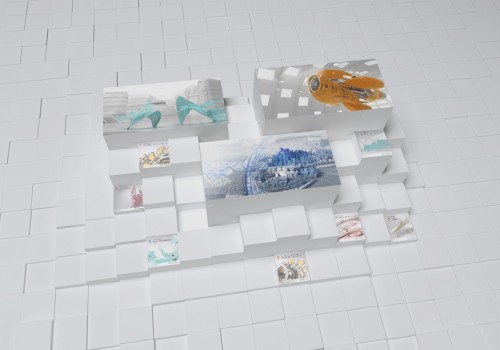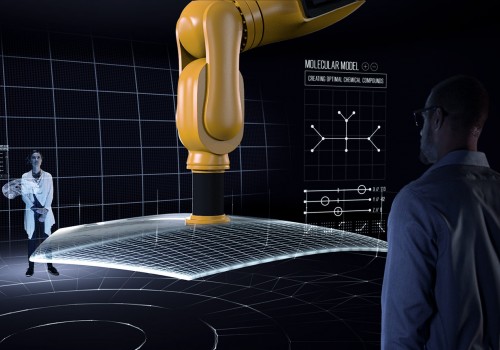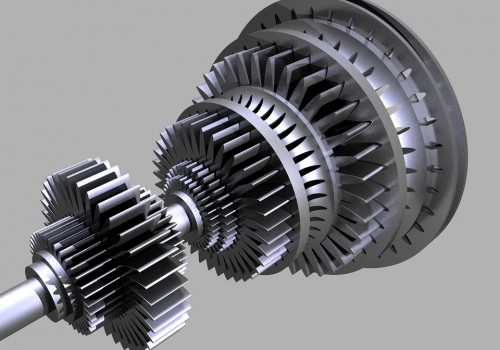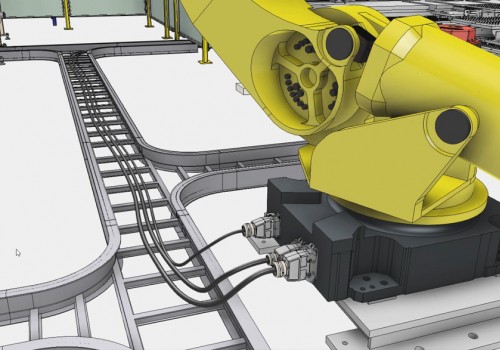Project Summary
Known for its inventive engineering and willingness to tackle technically challenging projects, Mammoth, Inc., has been delivering custom heating, ventilating, and air-conditioning equipment for more than 65 years. Mammoth uses a comprehensive solution from Autodesk to create unique product designs for large institutional customers, such as Bloomingdales, Cottonwood Mall, Mall of America, The Boeing Company, and Wachovia Bank.
The company does its product design in 3D with Autodesk Inventor Professional, and composes electrical designs for the products with AutoCAD Electrical. Autodesk is the only single-source vendor that provides the breadth of functionality required to create this seamless product development environment. With the Autodesk manufacturing solution, Mammoth engineers are able to deliver production-ready designs to manufacturing, vastly reducing the manual work that once took place on the shop floor. Since implementing Autodesk Inventor Professional and AutoCAD Electrical, Mammoth has reduced per-project costs by up to $9000 and cut manufacturing time in half.
The Challenge Deliver More Customized Products While Reducing Costs
Pressed to reduce costs and bring increasingly innovative products to market faster, Mammoth began to focus on improving efficiencies that would speed up its manufacturing process—in particular, delivering accurate, detailed engineering designs to the shop floor. Before the company transitioned from 2D to 3D with the Autodesk solution, manufacturing was grappling with ‘on the fly’ fixes—particularly when it came to piping—that ultimately cost Mammoth time and money.
“We’d do the piping in the wrong direction or get cornered into a situation and then would have to scrap the pipe,” explains McFarland, Senior Designer at Mammoth. “A unit could sit for a couple of days while one or more guys scratched their heads thinking, ‘How am I going to get around this?’”
Now, when a design hits the shop floor it includes everything needed to manufacture the product seamlessly. “With Autodesk Inventor Professional, we can clearly visualize where piping is going to go and design the components around it,” says McFarland. “Because we can see that we have adequate space beforehand, we have been able to reduced downtime on the floor.”
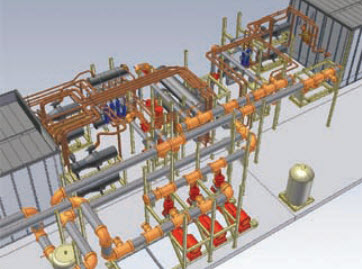
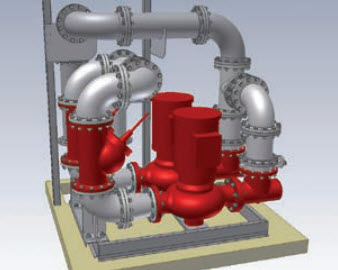
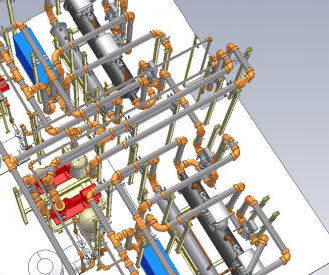
Why Autodesk?
Mammoth has gone through two CAD implementations, both times choosing Autodesk products. For years Mammoth successfully used AutoCAD. The company later moved to Autodesk Mechanical Desktop. At that time, Mammoth conducted an exhaustive evaluation and selected Autodesk after assessing Autodesk, SDRC (Structural Dynamics Research Corporation), PTC® (Parametric Technology Corporation), and SOLIDWORKS® from Dassault Systems. With nearly 150,000 files of legacy designs archived, Mammoth conducted another evaluation of available solutions when it decided to look at next generation 3D solutions to reach its cost-cutting and efficiency goals.
This time, after assessing Autodesk Inventor and SOLIDWORKS, Mammoth chose Autodesk Inventor because it’s part of a comprehensive solution offered at the best price and performance. From past experience, Mammoth knew it would receive excellent support from its Autodesk Premier Solution Provider. In addition, benchmarking evaluations proved that Autodesk Inventor could meet Mammoth’s requirements and was best equipped to deal with Mammoth’s complex assemblies.
“SOLIDWORKS couldn’t quite handle our large assemblies,” says McFarland. “Not like we were seeing with Autodesk Inventor. It effectively handled our assemblies of 10,000 parts and addressed our sheet metal requirements—plus, with Autodesk Inventor, AutoCAD compatibility was a given.” After the evaluations, the engineering team selected Autodesk Inventor by taking a vote. “It just made sense,” adds McFarland.
Mammoth also knew that by choosing Autodesk, adopting the new software wouldn’t be a burden on its engineers. “Autodesk always has the lead in the marketplace for CAD and there are so many users out there,” says McFarland. “AutoCAD users can migrate to Autodesk Inventor very easily.” Once Mammoth implemented Autodesk Inventor, the company continued to expand its capabilities, innovation, and productivity by incrementally adding Autodesk Inventor Professional and AutoCAD Electrical. Streamlining
Production with Precision 3D Designs
Using the Autodesk manufacturing solution has helped Mammoth streamline the creation process, making engineers more productive. “If you make a change to a design, your assembly is immediately updated,” notes McFarland. “It’s all interactive. We’ve seen significant performance improvements in the workflow process.” And now in full production, Autodesk Inventor Professional has proved its ability to tackle Mammoth’s huge assemblies. “A typical Mammoth product is from the size of a bus to as big as it needs to be—and has tens of thousands of parts,” says McFarland. “Autodesk Inventor Professional easily handles whatever we throw at it, which is pretty major.”
With Autodesk Inventor Professional, Mammoth has been able to reduce manual work on the shop floor by creating designs that are more accurate and detailed than before. The company has removed the guesswork from pipe design, leading to increased efficiencies, cost savings, and a boost in productivity. And the integrated sheet metal tools available in Autodesk Inventor Professional facilitate Mammoth’s sheet metal work.
“We do tons of sheet metal work, which is very feature rich since you’ve got all those fillets, holes, and knockout punches,” notes McFarland. “Inventor’s sheet metal capabilities are powerful.” Because the engineers can visualize everything in their complex assemblies ahead of time to make sure the design is right before it goes to the shop floor, scrap and manufacturing costs have dropped significantly.
Saving Time and Effort using AutoCAD Electrical
Mammoth has also been using AutoCAD Electrical to create more detailed electrical drawings in a flexible environment. The company’s previous electrical software, ECT’s promis-e®, had a very complicated, fixed project structure that ultimately failed to deliver the functionality that Mammoth needed.
“With promise-e, the project catalogs were all locked up and, therefore, difficult to edit,” says David Pedersen, Electrical Engineer at Mammoth. “For instance, we had problems adding new parts to the database. That was one reason we decided to make the switch.”
In contrast to promis-e, AutoCAD Electrical provides Mammoth with the flexibility it needs to create electrical drawings more efficiently. “Because it uses standard Microsoft Access databases and isn’t proprietary in any way, AutoCAD Electrical is very flexible and easy to use,” adds Pedersen. “You can read information, create custom reports, and do whatever you want because it has an open structure. The fact that AutoCAD Electrical doesn’t limit us is a major advantage.”
Now the drawings the engineers create are more richly detailed, yielding significant benefits. “We’re putting more information on our drawings than we ever did before,” says Pedersen. “As a result, we’re able to give much more data to the production floor, eliminating questions. Overall, AutoCAD Electrical has improved our communication with assembly people who are not necessarily trained in electrical.”
Mammoth has also seen time reductions, thanks to the software’s easy-to-use reporting functions. “Some of our reports used to take five minutes and now I can get the same information in seconds,” adds Pedersen. “With four or five reports per drawing, the time savings really adds up.”
McFarland sums up why Mammoth continues to depend on Autodesk, “Autodesk offers the most complete package. For every area that we need engineering support, they have a solution.”
The Results
50% Reduction in Manufacturing Cycle— Reduced Costs, Scrap, and Change Requests
The results of using Autodesk’s manufacturing solution have been dramatic for Mammoth. The manufacturing cycle has been reduced from a week to just two or three days—a savings of 40-50%. In addition, McFarland estimates that Autodesk Inventor Professional saves Mammoth anywhere from $500 to $9000 per project. “With two extra days of production capacity on the floor, we can drive that much more product out the door,” says McFarland. “The software quickly pays for itself.”
Scrap metal has also decreased, as have the number of change requests from the floor. “When we first went from 2D to 3D, we saw a drastic decrease in the number of change requests from the floor,” adds McFarland. “Since implementing Autodesk Inventor Professional, we have been able to reduce that number further by another five percent.”
Living up to its reputation for innovation has never been easier for Mammoth. “We’re now turning out more innovative products,” says McFarland. Customers are also impressed with Mammoth’s ability to deliver 3D models before production even begins. “Our customers demand to have everything, including piping, in 3D,” explains McFarland. “When we show them our designs, they are amazed. Autodesk solutions have been a huge advantage for us.” “With two extra days of production capacity on the floor, we can drive that much more product out the door. The software quickly pays for itself.”
Matt McFarland, Senior Designer, Mammoth, Inc.
Learn more about AutoCAD Electrical here, or contact us using the form below.
Additional Resources
Success Stories
Success Stories
Featured Products
Featured Products
Article
Featured Products
Success Stories
Featured Products
Autodesk Architecture, Engineering & Construction Collection
Article
